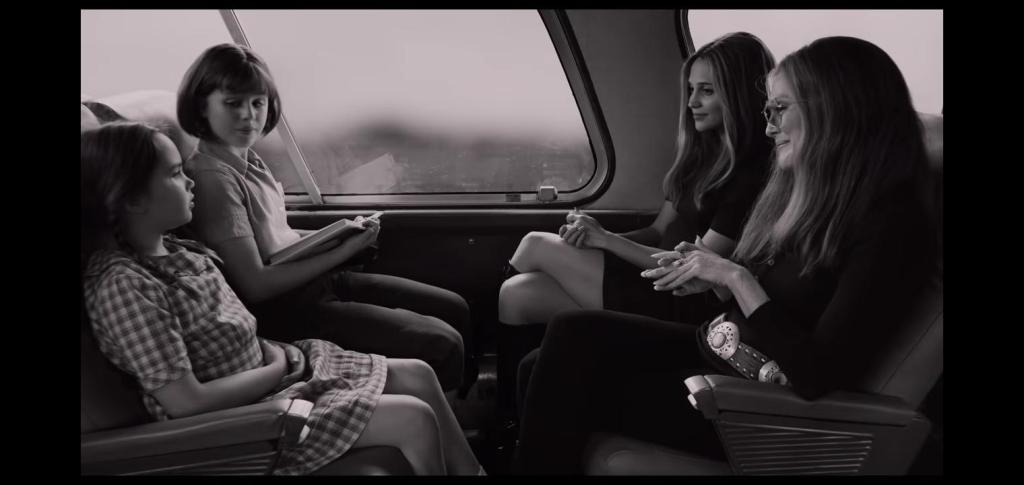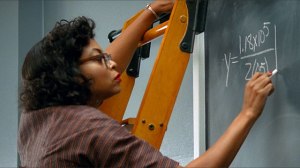Harriet Tubman was born a slave named Araminta “Minty” Ross in Maryland. She suffered all the usual indignities and violence inflicted upon slaves, but one injury in particular left her with permanent brain damage, which gave her, as she described “premonitions from God.”
According to a legal will, she was supposed to have been freed long ago, but when she eventually went to plead with her owner, it wasn’t for her own freedom but that of her unborn child. She had married a freeman who visited her frequently, but he didn’t want to have a baby who would be born a slave, and I suppose you can guess how her masters answered her.
So that’s when Harriet got it in her head to run away. I mean, it must have been in every slave’s head every day of their lives, but finding the courage and the opportunity to do it was prohibitive. Runaways were brought back and tortured before being put to death, to set an example for others. It would have been a powerful motivator for staying put, to say nothing of having to leave behind your loved ones. Of course, when your loved ones can be sold away without notice, it is perhaps not such a big risk after all.
At any rate, Harriet did leave one night, alone. She traveled to Philadelphia on foot, 145km, evading slave catchers and bounty hunters, hiding by day, guided by the north star at night. Eventually she made it to freedom: she survived.
In the film, Harriet (Cynthia Erivo) arrives in Philadelphia and meets William Still (Leslie Odom Jr.), a member of the Pennsylvania Anti-Slavery Society and conductor on the Underground Railroad. He is a meticulous record-keeper and Harriet’s is but one of many, many entries in his logbook. She then meets Marie (Janelle Monae), a black woman born free, who owns the rooming house where Harriet lives. Marie teaches Harriet a different kind of life. Of course, posing as a free woman is an improvement, but not exactly without risks or complications. People are still looking for her. Harriet could spend her whole life looking over her shoulder. But she doesn’t.
Instead, Harriet chooses not only to look back, but to go back. To rescue family, friends, and in fact dozens if not hundreds of strangers. To go back for others, and free them as well. If it’s hard enough to understand how someone could endure so much pain and torment, and then find the courage to escape, it’s darn near impossible to picture the kind of person who would risk it all to go back. But she does.
In fact, she went back 13 times over a period of 11 years, though each trip only put her more at risk. She became an esteemed conductor on the Underground Railroad, never having lost a soul on her midnight runs. Every successful conductor had a network of friends and allies, and though some were white abolitionists whose participation was a great risk, there were also many black people along her route who risked much more but did it anyway.
It’s about time someone put Harriet Tubman up on the big screen for all to admire, and director Kasi Lemmons seems to understand the weight of her responsibility. The incredible thing is, she chooses to do it without the usual trappings of the slave film. Of course, those are largely understood by now, and their threat is still heavily felt. Instead Lemmons focuses on Harriet’s repeated runs, and though their repetition does make each one feel less of a thrill, their sheer number begins to impress. Harriet is not a slavery movie. Harriet is a freedom movie. It is a showcase for resilience, and hope. It’s also a reminder of the kind of impact one single person can have.
To that end, Cynthia Erivo shines as its star. Harriet may not be a complete biopic, but it is a fascinating origin story for one of history’s greatest super heroes. If Erivo isn’t talked about at Oscar time, it would be a crime.






 abilities are leaking out however they can, and now Mark is a photographer, and his subjects are quite unusual. Hogancamp has constructed a village in his backyard, a village called Marwen, which is inhabited by dolls. He sets the dolls up in war-time scenarios, and each one represents someone special to him in real life, namely the women who care for him. Living among Marwen’s women is Captain Hogie, the stand-in for Hogancamp, a tough soldier who lives his life fearlessly. And so he should, because as invariably as he is captured and beaten by the Nazis hiding on the outskirts of town, his lovely ladies come to his rescue, time and time again.
abilities are leaking out however they can, and now Mark is a photographer, and his subjects are quite unusual. Hogancamp has constructed a village in his backyard, a village called Marwen, which is inhabited by dolls. He sets the dolls up in war-time scenarios, and each one represents someone special to him in real life, namely the women who care for him. Living among Marwen’s women is Captain Hogie, the stand-in for Hogancamp, a tough soldier who lives his life fearlessly. And so he should, because as invariably as he is captured and beaten by the Nazis hiding on the outskirts of town, his lovely ladies come to his rescue, time and time again. NASA pay them equally? Not by a long shot. Treat them fairly? Not so much. Promote them? Never. But hire them they must because there’s a space race on with the Russians, and they can’t afford not to hire the best and the brightest no matter the skin colour encasing the brains.
NASA pay them equally? Not by a long shot. Treat them fairly? Not so much. Promote them? Never. But hire them they must because there’s a space race on with the Russians, and they can’t afford not to hire the best and the brightest no matter the skin colour encasing the brains. had the audience applauding. These women are so inspirational that it would be hard to mess up the story, and Hidden Figures manages not to stand in its own way. At the Toronto International Film Festival this fall, Pharrell Williams, who collaborated on the score with Hans Zimmer, gave a concert of all the original music he’d worked on for the film. I worried that he might overshadow the film, but in fact his music fits right in very comfortably, establishing the time period in a pop-heavy way.
had the audience applauding. These women are so inspirational that it would be hard to mess up the story, and Hidden Figures manages not to stand in its own way. At the Toronto International Film Festival this fall, Pharrell Williams, who collaborated on the score with Hans Zimmer, gave a concert of all the original music he’d worked on for the film. I worried that he might overshadow the film, but in fact his music fits right in very comfortably, establishing the time period in a pop-heavy way. Moonlight is the quietest tour de force I’ve probably ever seen. Never have I rooted for a drug dealer in this way, and never have I sympathized so much with a kid who wanted to follow in that drug dealer’s footsteps. Moonlight is spectacular in its simplicity. It is also entirely different than the movie I expected.
Moonlight is the quietest tour de force I’ve probably ever seen. Never have I rooted for a drug dealer in this way, and never have I sympathized so much with a kid who wanted to follow in that drug dealer’s footsteps. Moonlight is spectacular in its simplicity. It is also entirely different than the movie I expected. Chiron’s adolescence is the subject of three tightly focused vignettes. It’s a wonderful storytelling choice that perfectly explains Chiron’s choices as he grows up, without having to engage in any exposition. Moonlight is brave in many ways but to me it’s the choice to let us figure things out for ourselves that makes this film great. It makes the journey more fulfilling, the experience more real, and greatly increases our empathy for Chiron. Moonlight helps us understand Chiron to a degree that I would not have thought possible. Regardless of your race, wealth, or sexual orientation, we are all a lot like Chiron.
Chiron’s adolescence is the subject of three tightly focused vignettes. It’s a wonderful storytelling choice that perfectly explains Chiron’s choices as he grows up, without having to engage in any exposition. Moonlight is brave in many ways but to me it’s the choice to let us figure things out for ourselves that makes this film great. It makes the journey more fulfilling, the experience more real, and greatly increases our empathy for Chiron. Moonlight helps us understand Chiron to a degree that I would not have thought possible. Regardless of your race, wealth, or sexual orientation, we are all a lot like Chiron. Alex Hibbert, Ashton Sanders and Trevante Rhodes each take remarkable turns as Chiron and the extent to which they feel like the same person is incredible. Mahershala Ali is not the only other actor deserving of mention (the supporting cast is consistently great) but for my money his performance as the aforementioned drug dealer shapes Chiron’s life and makes us understand his growth to a degree that is virtually unmatched in film.
Alex Hibbert, Ashton Sanders and Trevante Rhodes each take remarkable turns as Chiron and the extent to which they feel like the same person is incredible. Mahershala Ali is not the only other actor deserving of mention (the supporting cast is consistently great) but for my money his performance as the aforementioned drug dealer shapes Chiron’s life and makes us understand his growth to a degree that is virtually unmatched in film.